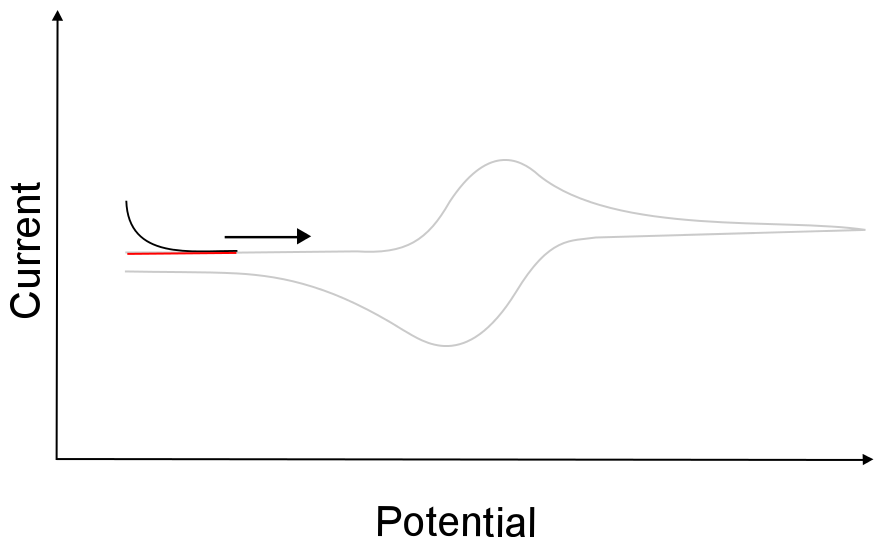Starting The Scan
When a scan randomly begins at a chosen potential, a double layer charging current is observed. While this often harmless, it looks ugly and should be avoided. Some potentiostats offer the option of having a “quiet time” where the electrode is held at the starting potential for a given amount of time (10 seconds is sufficient), which results in a CV with a clean start.

hover over pic for description
For the first scan, before the E1/2’s of the analyte are known, it is usually best to start near the open circuit potential to insure that no undesired electron transfers occur, as starting the open circuit potential is determined by natural state of the analyte in the prepared solution. The first scan should span the full width of the potential window, and all redox events should be noted. After a full CV is collected, one needs to think about what other information can be obtained.



Did I earn one of these yet?

is licensed under a Creative Commons Attribution-NonCommercial-ShareAlike 4.0 International License.